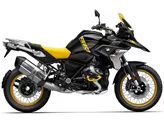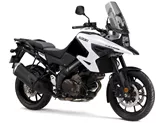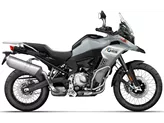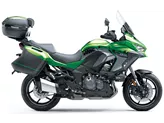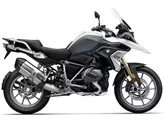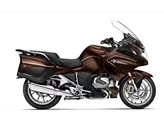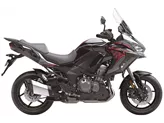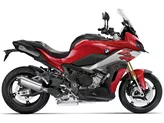Kawasaki Versys 1000 SE 2019 vs. BMW R 1200 GS 2016

Kawasaki Versys 1000 SE 2019

BMW R 1200 GS 2016
Pregled - Kawasaki Versys 1000 SE 2019 vs BMW R 1200 GS 2016
The Kawasaki Versys 1000 SE 2019 and the BMW R 1200 GS 2016 are both enduro motorcycles that offer a combination of on-road and off-road capabilities. While they have some similarities in terms of engine power and torque, there are also notable differences in their technical specifications.
In terms of engine type, the Kawasaki Versys 1000 SE 2019 features an in-line four-cylinder engine, while the BMW R 1200 GS 2016 has a boxer twin-cylinder engine. Both engines have their own advantages and characteristics, with the in-line engine of the Versys offering top response and the boxer engine of the GS known for its power.
The engine power of the Versys is rated at 120 HP, slightly lower than the 125 HP of the GS. However, the Versys compensates for this with its impressive torque rating of 102 Nm, compared to the GS's 125 Nm. The transmission systems also differ, with the Versys using a chain drive and the GS utilizing a prop shaft drive.

Kawasaki Versys 1000 SE 2019
In terms of suspension, the Versys features an upside-down telescopic fork at the front and adjustable compression, preload, and rebound settings for both the front and rear suspension. On the other hand, the GS has a strut front suspension with preload adjustment for both the front and rear suspension. Both bikes offer customization options for the suspension, allowing riders to adjust it according to their preferences.
The chassis of the Versys is made of aluminum, which provides a lightweight and sturdy frame. In contrast, the GS has a steel frame, which may add some weight but is known for its durability.
When it comes to braking, both bikes have double disc brakes at the front. However, the GS has been noted for its sharp braking, which may require some getting used to for riders.
In terms of dimensions and weights, the Versys has a slightly longer wheelbase of 1520 mm compared to the GS's 1507 mm. The seat height of the Versys is also slightly lower at 840 mm, compared to the GS's 850 mm. The fuel tank capacity of the Versys is 21 liters, slightly larger than the GS's 20 liters. However, the Versys is slightly heavier with a kerb weight of 250 kg, compared to the GS's 238 kg.

BMW R 1200 GS 2016
In terms of strengths, the Versys offers a great Ride-By-Wire system that provides impeccable engine response, a fantastic electronics package, and a comfortable seating position with top wind protection. On the other hand, the GS is known for its powerful engine, low fuel consumption, comfortable seating position, and its ability to be used off-road. It also has a high reputation in the motorcycle community.
However, both bikes have their weaknesses as well. The Versys's advanced technology comes at a higher cost, and its windshield adjustment may not be optimal. The GS has a long and expensive surcharge side, its Telelever front suspension may take some getting used to, and its brakes can be sharp.
In conclusion, the Kawasaki Versys 1000 SE 2019 and the BMW R 1200 GS 2016 are both capable enduro motorcycles with their own strengths and weaknesses. The Versys offers great technology and comfort, while the GS is known for its power and versatility. Ultimately, the choice between the two will depend on the rider's preferences and priorities.
Tehnične specifikacije Kawasaki Versys 1000 SE 2019 v primerjavi z BMW R 1200 GS 2016
Primerjava prednosti in slabosti
Primerjava prednosti in slabosti
Kawasaki Versys 1000 SE 2019

Kawa's solution, conceived in the adventure sector, is an uncompromising all-purpose weapon in the sport-touring sector. The machine's greatest strength: maximum comfort paired with state-of-the-art technology and the right amount of sportiness. The Ride-By-Wire in combination with the KECS and the electronic equipment ensure super responsiveness with maximum touring capability at the same time. The finely adjustable throttle, the smooth clutch and the electronic chassis ensure an almost majestic glide on the road. At the same time, the great seating position with the matching, if not the most beautiful, windshield ensures top aerodynamics - bravo!
BMW R 1200 GS 2016
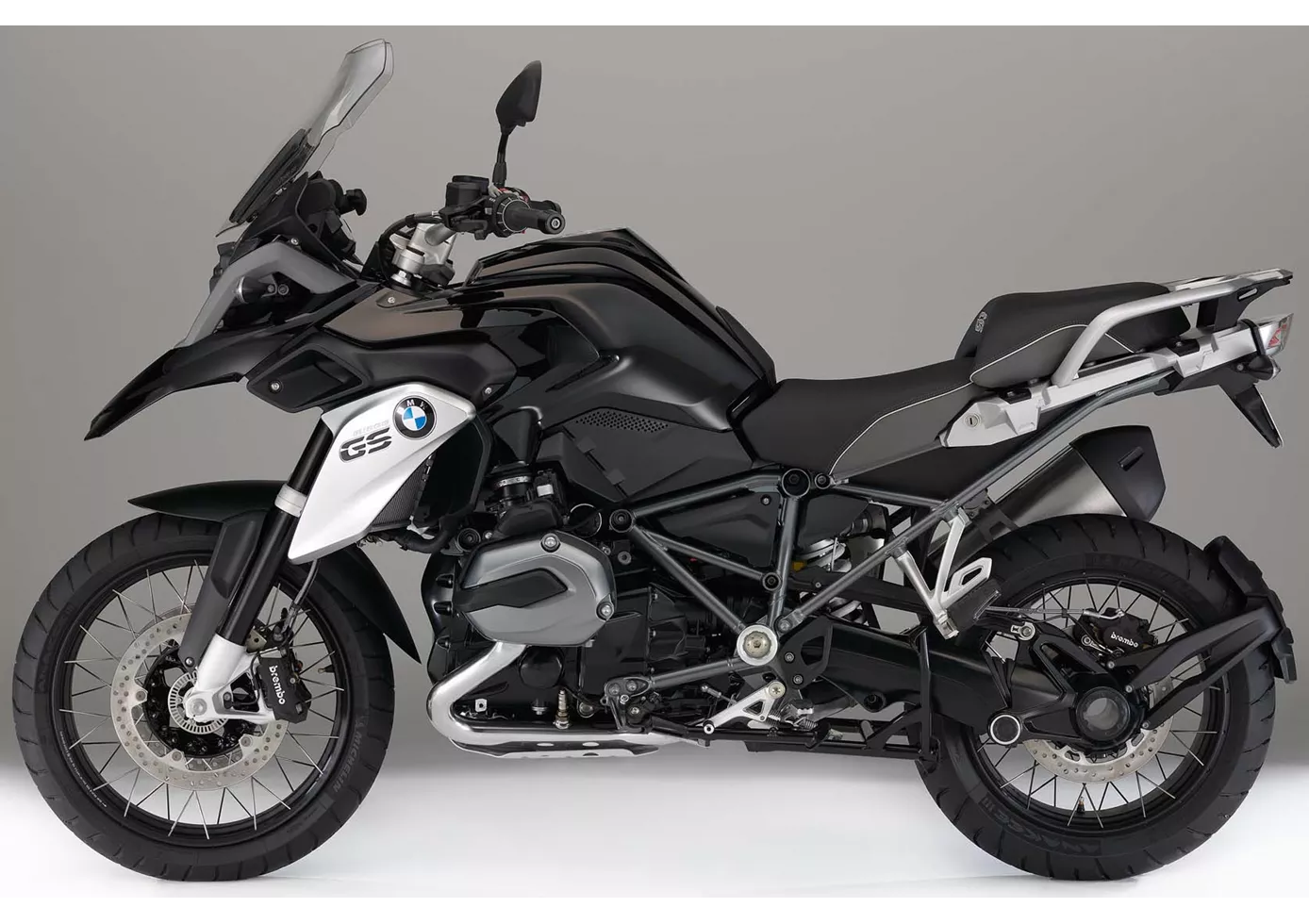
A GS is at home almost anywhere - but only to a limited extent on the racetrack. It's a pleasure to feel the power of the partially water-cooled boxer twin cylinder on the exit of the bend - 125 hp only seems much weaker on paper than 150 or even 160 hp on the competition. With 125 Newton metres of torque, the acceleration from the bottom is superb anyway and the GS, at 238 kilos ready to ride, does not carry too much flab despite its bulky appearance. In very tight corners, the low centre of gravity also has a positive effect - the BMW R 1200 GS is very hard to crack! Even the front telelever suspension, which suppresses the front wheel's tendency to sink in under braking, fits perfectly into the GS's overall package and only slightly detracts from its sporty character.
Primerjava povprečnih tržnih cen Kawasaki Versys 1000 SE vs BMW R 1200 GS
There are a few key differences between a Kawasaki Versys 1000 SE 2019 and a BMW R 1200 GS 2016. In terms of price, the actual average price of a BMW R 1200 GS 2016 is about 12% higher. A Kawasaki Versys 1000 SE 2019 experiences a loss of 1,080 USD in one year and 1,470 USD in two years of ownership. This is offset by a loss of 410 USD and 880 USD for a BMW R 1200 GS 2016. Compared to BMW R 1200 GS 2016 there are less Kawasaki Versys 1000 SE 2019 bikes available on the 1000PS.de Marketplace, specifically 10 compared to 47. It takes less time to sell a BMW R 1200 GS with 70 days compared to 107 days for the Kawasaki Versys 1000 SE. Since model year 2019 1000PS.de editors have written 12 reviews for the Kawasaki Versys 1000 SE and 98 reviews for the BMW R 1200 GS since model year 2005. The first review for the Kawasaki Versys 1000 SE was published on 11/6/2018 and now has more than 25,500 views. This compares to more than 19,100 views for the first review on BMW R 1200 GS published on 1/20/2004.



